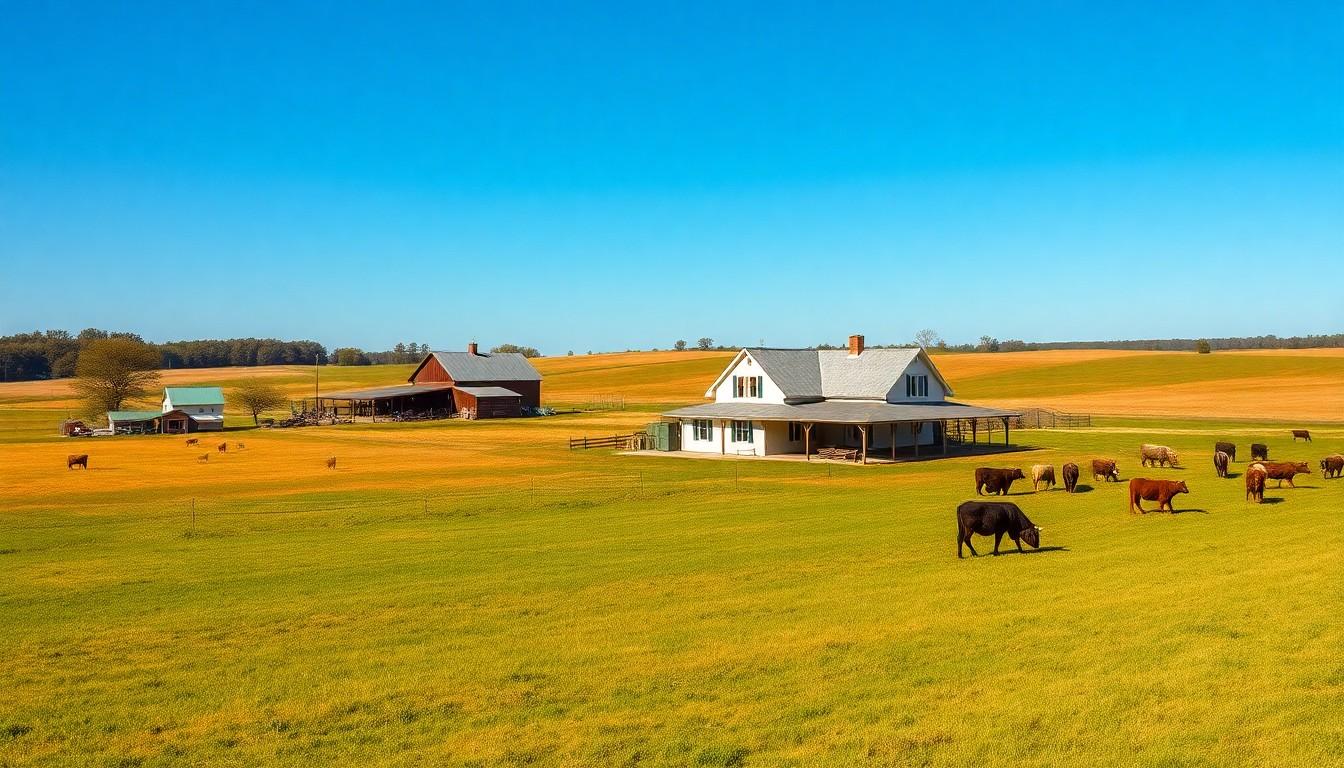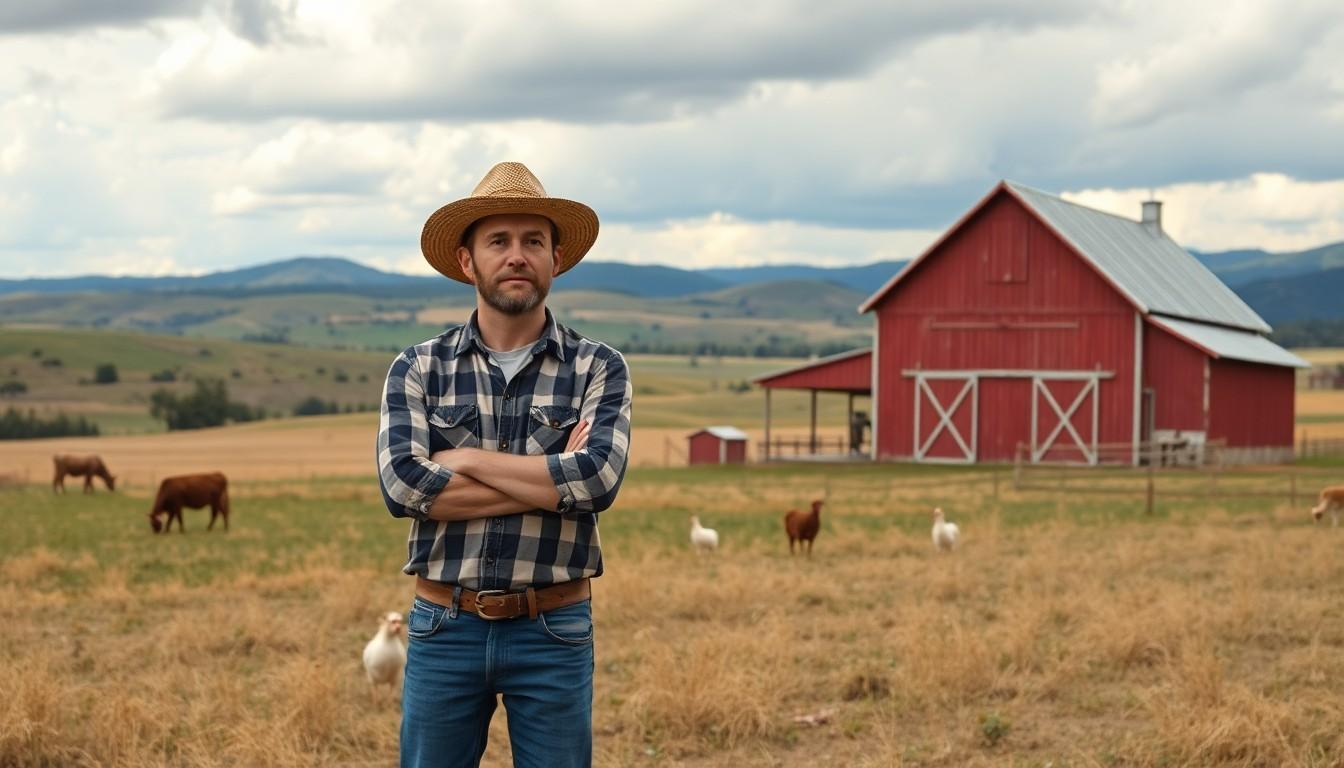In the vast expanse of rural landscapes, where the only traffic jam involves a tractor and a couple of cows, ensuring your property is protected is crucial. Rural properties come with their own unique set of challenges, from unpredictable weather to the occasional wayward deer trying to claim your garden as its own. It’s not just a home; it’s a lifestyle, and it deserves insurance that understands its quirks.
Imagine waking up to a picturesque sunrise, only to find your barn has turned into a swimming pool after a surprise storm. With the right insurance, you can laugh about it instead of crying over your soggy hay bales. This guide will navigate the wild world of rural property insurance, helping you find coverage that keeps your slice of paradise safe and sound, no matter what Mother Nature throws your way.
Insurance For Rural Properties
Rural properties face distinct challenges that necessitate specialized insurance coverage. Understanding these challenges ensures property owners make informed decisions about their insurance needs.
Unique Risks Associated With Rural Properties
Rural properties experience unique risks that urban homes often do not encounter. Severe weather patterns, including heavy storms and flooding, pose significant threats. Wildlife interactions also present challenges, such as damage from animals or pests that could harm crops and structures. Remote locations may result in longer response times from emergency services, increasing vulnerability during emergencies. Additionally, limited access to nearby amenities can complicate recovery efforts after incidents. Recognizing these specific risks allows property owners to assess the adequacy of their coverage effectively.
Importance Of Specialized Coverage
Specialized coverage plays a crucial role in safeguarding rural properties. Standard home insurance policies typically overlook risks specific to rural settings. Customized insurance solutions protect against wildlife damage, agricultural equipment losses, and natural disasters unique to rural environments. Liability coverage often extends to include exposure from farming activities, enhancing protection for property owners engaged in agricultural practices. Without proper coverage, homeowners risk substantial financial loss in the event of a disaster. Tailoring insurance to fit the needs of rural properties enables owners to safeguard their investments against unforeseen circumstances.
Types Of Insurance Available

Insurance for rural properties encompasses several types, each tailored to meet specific needs. Understanding these options is vital for comprehensive coverage.
Homeowners Insurance
Homeowners insurance protects against various risks associated with rural living. It covers property damage from events like fire or storms, which often affect rural areas more severely. Policies can include personal property coverage, ensuring belongings are safe from theft or damage. Many insurers offer additional riders for protection against unique rural risks such as wildlife damage. Certification should align with local building codes and environmental factors, enhancing overall security.
Farm and Ranch Insurance
Farm and ranch insurance addresses the distinct needs of agricultural properties. This specialized coverage includes protection for equipment, livestock, and crops, which regular homeowners insurance typically excludes. Policies often cover liability and property damage related to farming operations. It also offers additional options for business interruption due to unexpected events. Coverage can be customized to fit the size of the farm and specific livestock or equipment involved.
Liability Insurance
Liability insurance is essential for protecting against claims stemming from property injury or damage. This coverage plays a crucial role in rural settings, where interactions with visitors, guests, or neighbors occur more frequently. Policies can cover legal fees, medical expenses, and settlements from accidents on the property. Without sufficient liability coverage, homeowners risk significant costs in the event of lawsuits. It ensures peace of mind while enjoying the rural lifestyle.
Factors Influencing Insurance Costs
Several elements influence the costs of insurance for rural properties, affecting how much homeowners pay for coverage.
Location and Geography
Location plays a significant role in determining insurance premiums. Areas prone to natural disasters, such as floods or wildfires, elevate risk levels, leading to higher rates. Remote locations with poor road access complicate emergency response times, which can also increase costs. Proximity to essential services impacts premiums; living far from fire stations or hospitals often translates to higher insurance rates. Environmental features, such as nearby forests or bodies of water, may add to the risk profile as well. Regional climate patterns, especially in rural regions, influence the types of coverage needed.
Property Value and Features
Property value heavily impacts insurance costs. Homes with higher market values typically result in elevated premiums due to an increased potential for loss. Unique property features, like swimming pools or outbuildings, may necessitate additional coverage, which increases overall costs. Agricultural structures and livestock considerations often require specialized insurance options, contributing to higher expenses. Additionally, older buildings might not meet current building codes, resulting in increased insurance rates. Insurance policies also vary based on the inclusion of specific features that add value or risk to the property.
How To Choose The Right Insurance Policy
Selecting the appropriate insurance policy for rural properties involves understanding specific coverage needs and evaluating various providers. Tailored solutions address unique risks associated with rural living.
Assessing Coverage Needs
Identifying coverage requirements starts with a thorough evaluation of property type, location, and potential risks. Rural properties often face challenges like severe weather and wildlife-related damage, making specialized coverage essential. Homeowners should consider insuring agricultural equipment and crops to mitigate risks associated with farming activities. Assessing additional riders can enhance protection against specific natural disasters common in their area. Understanding these elements leads to a comprehensive insurance plan that safeguards homeowners effectively.
Comparing Insurance Providers
Evaluating different insurance providers helps ensure the best fit for specific needs. Comparing coverage options, premium rates, and customer reviews provides insight into various offerings. Focus on providers specializing in rural insurance, as their expertise often translates into better coverage tailored to unique risks. Requesting quotes from several companies facilitates better price comparisons and coverage insights. Checking financial strength ratings and customer service responsiveness further ensures reliability and satisfaction with chosen coverage.
Safeguarding Your Future
Navigating the world of insurance for rural properties requires careful consideration and understanding of unique risks. Homeowners must prioritize tailored coverage to safeguard against unpredictable weather and wildlife encounters. By exploring specialized options like farm and ranch insurance and liability policies, property owners can ensure comprehensive protection.
Evaluating factors that influence insurance costs is equally important. By assessing property features and location, homeowners can make informed decisions that align with their needs. Ultimately, investing time in choosing the right insurance policy not only provides peace of mind but also secures the financial future of rural property owners.

